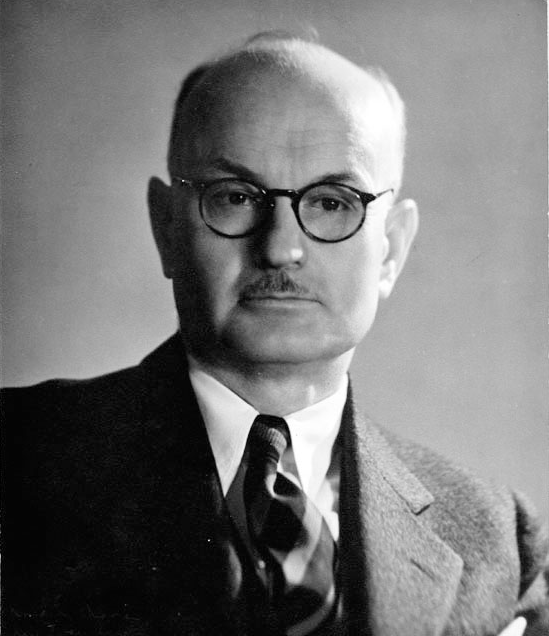Who would have thought that studying white rats in mazes could really tell us much about human behavior? For decades in the mid-twentieth century it was all the rage, and a lot of that work turned out to be up blind alleys. But one of those investigators came to some keen insights. Today, however, few even know his name. That’s rather odd, because in todays “cognitive behavioral psychology,” which is highly influential in the USA, we find the strange phenomenon that Edward Chace Tolman (1886-1959) is seldom mentioned, even though the whole cognitive-behavioral approach has been built largely on the foundation of his ideas. When the classical behaviorism of the mid-20th century ran out of new ideas, blending it with Tolman’s insights about cognition added a new dimension.
Tolman said essentially, “rats think, just as people think.” But in his behaviorism-dominated era, he went on to say, “And to ensure that we are objective scientists, we will discover what and how they think by studying their observable behavior.”
Rats and people, he said, live in worlds of paths and tools, obstacles and by-paths. In most matters both rats and people prefer short or easy means to a goal over long or difficult ones. And any description of goal-directed behavior is always about getting toward something or getting away from something. That includes what the person or rat is doing, what he, she, or it is trying to do, and where it is going.
But to me, none of that was as intriguing as his statement that rats, people, and other creatures form what he called cognitive maps of the physical and social environments within which they live, think, and navigate. A cognitive map describes the mental and physical routes a person takes, and what rewards and punishments exist along various physical or mental corridors. In retrospect, it’s obvious. Sitting here at my computer, there are some routes (sets of procedures to make the computer behave in specified ways) that I know very well, some that I sort of know, and many others that I don’t know at all. This desktop computer has the capacity to do thousands of things that I don’t know how to tell it to do. It does only what falls within the compass of my cognitive map of it.
In almost every area of life the same is true. We live within the confines of our cognitive maps (a concept that has much in common with what gestalt psychologist and field theorist Kurt Lewin called the “Life space.”)
When the expectations that are defined by our cognitive maps are not fulfilled, we can get quite upset. A psychologist named Tinklepaugh hid a piece of banana under a cup, allowing a monkey to see him do it. At that point the monkey’s cognitive map included “there is banana under that cup.” But Tinklepaugh, the sly devil, secretly substituted a piece of lettuce, a less–preferred item. When the monkey lifted the cup and found the lettuce, it threw a tantrum.
Human beings often do likewise. We expect things to be a certain way and blow our cool when they’re not. I like to use the terms “inquirers” and “deniers” for two different kinds of responses when something is not as we expect it to be. An inquirer responds to new evidence that shows that his or her belief or attitude about something is wrong by exploring other possibilities and trying to find out what’s really so. A denier redoubles his or her attachment to the mistaken belief or attitude or habit and seeks to get others to confirm that the wrong is right. That’s where a lot of our problems come from.
“Very interesting,” you may say. “But what’s the practical payoff of all this?”
Very simply, You can become an observer of your own cognitive maps. Notice where your mind goes and what it does, and where and what it does not go and do. This is an kind everyday awareness practice that is related to meditation. As you try it, you are likely to start making fewer dumb mistakes, and to more often act in ways that are helpful both to you and to others. In a sense, this is ongoing mindfulness (Buddhist term) or witness consciousness (Yogic term) carried on in the midst of everyday life.
And you can also begin to see other people’s cognitive maps. A few questions can tell you a lot about where a person’s mental and emotional energy flows and where it doesn’t.
As a result of seeing or hearing where your cognitive maps fit reality and where they don’t, you’ll see when and where and how you need to change them. This is important in our daily lives and our larger cultural narratives. If you don’t ever stand back and look at your own cognitive map, you probably end up imprisoned in the “dominant narrative” of your culture, which is the story that the power elite who controls much of what happens wants you to believe.
If all this intrigues you and you’d like to know more about some very contemporary ancient history in psychology, read Tolman’s Behavior and Psychological Man. If you and want just a little more, you can look at my old lecture notes on Tolman at:
An Introduction to Purposive Behaviorism
Doing any of those three things will enlarge your own cognitive map at least a bit.

